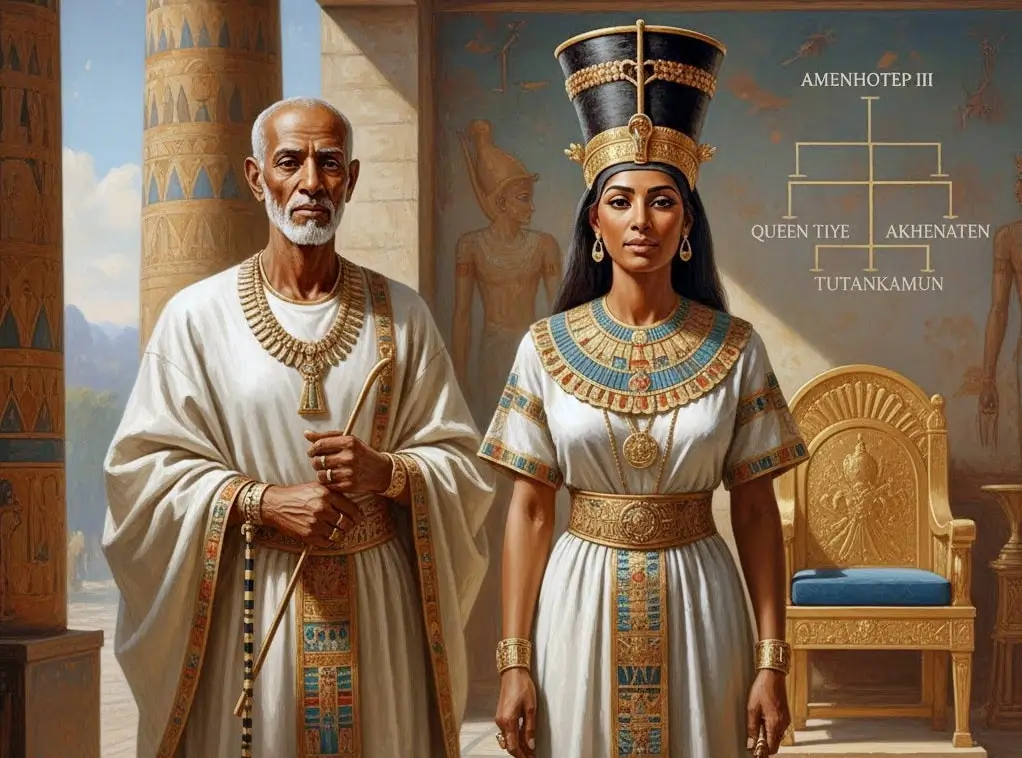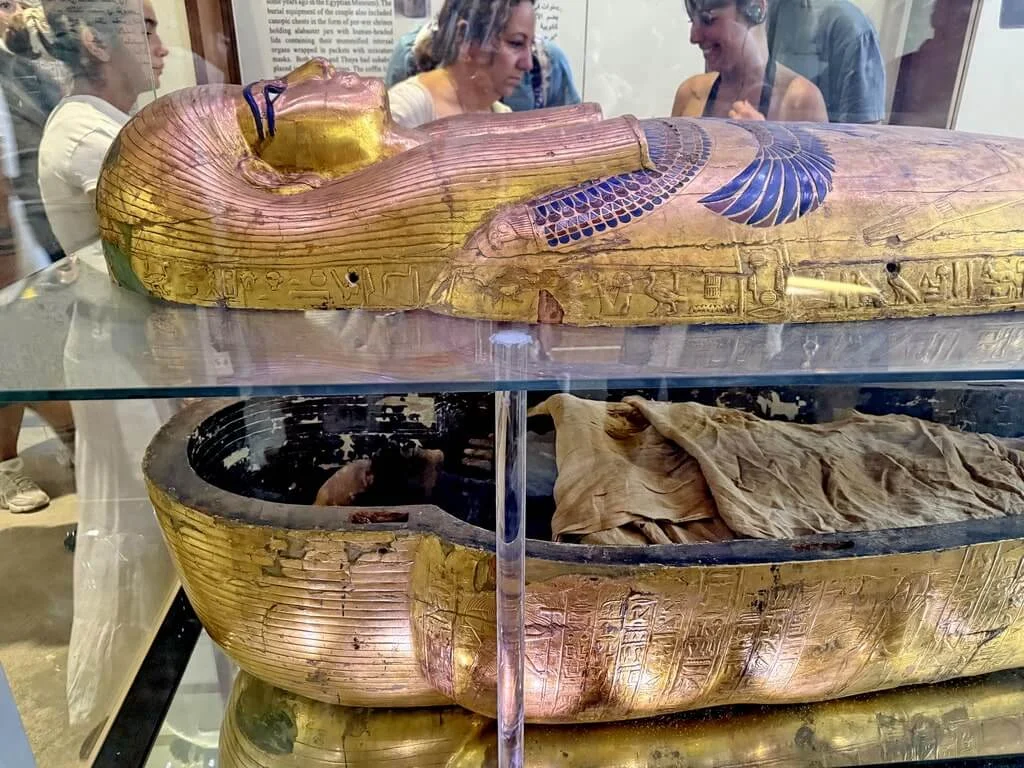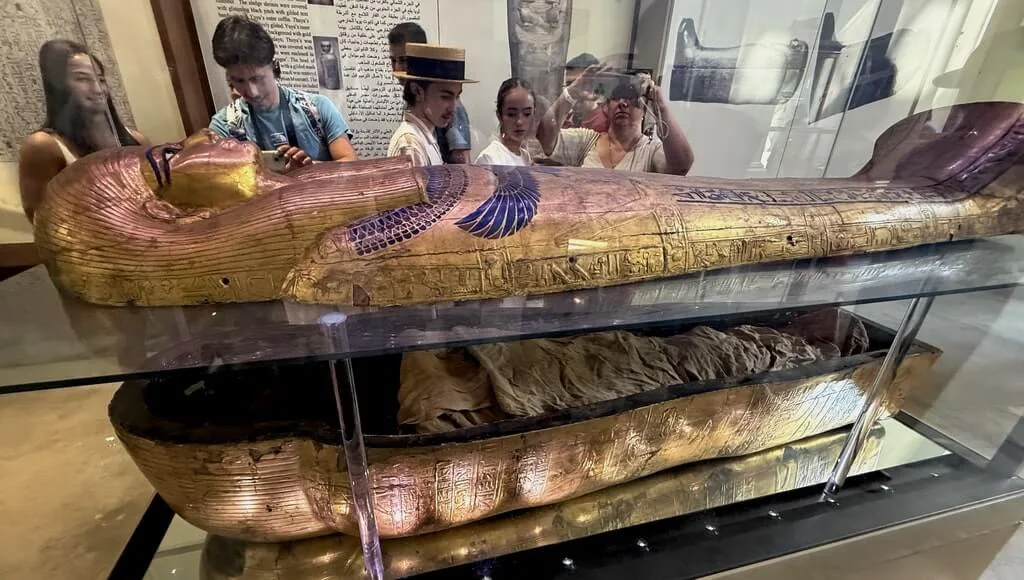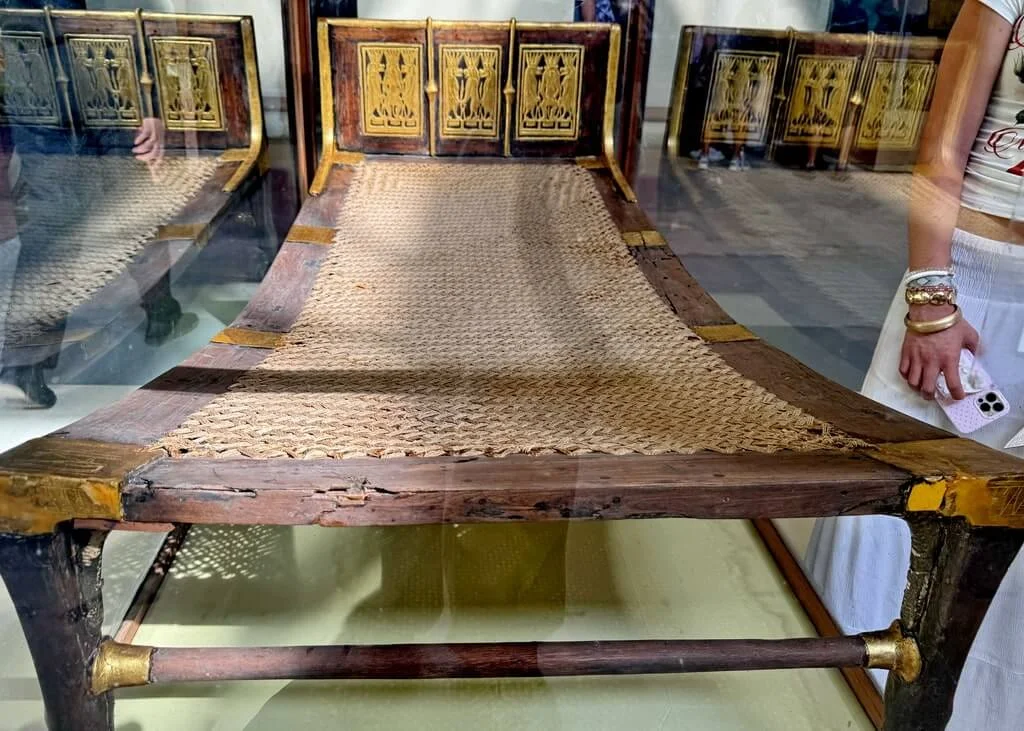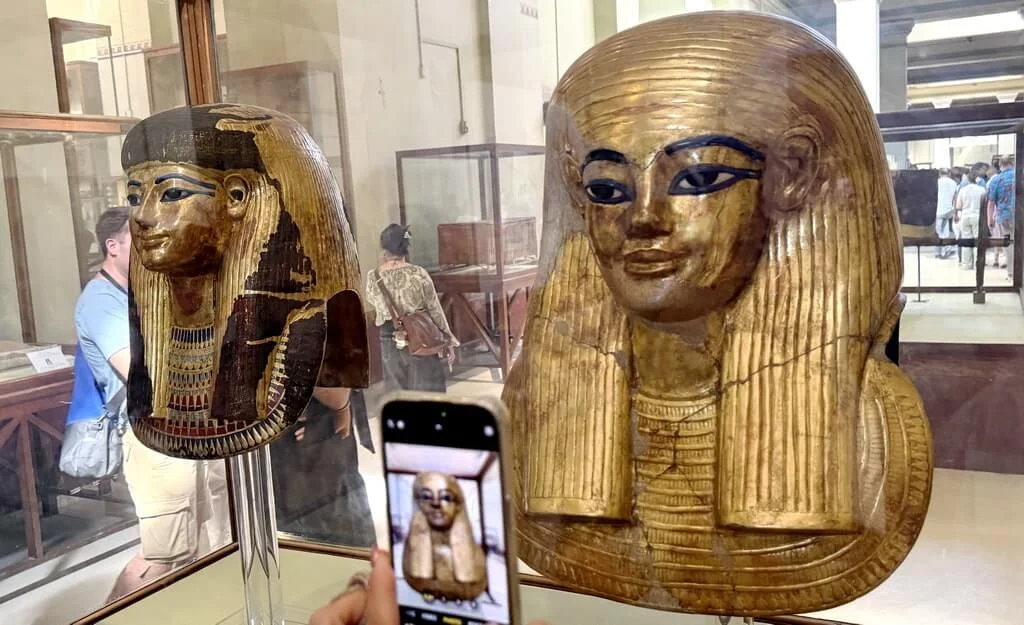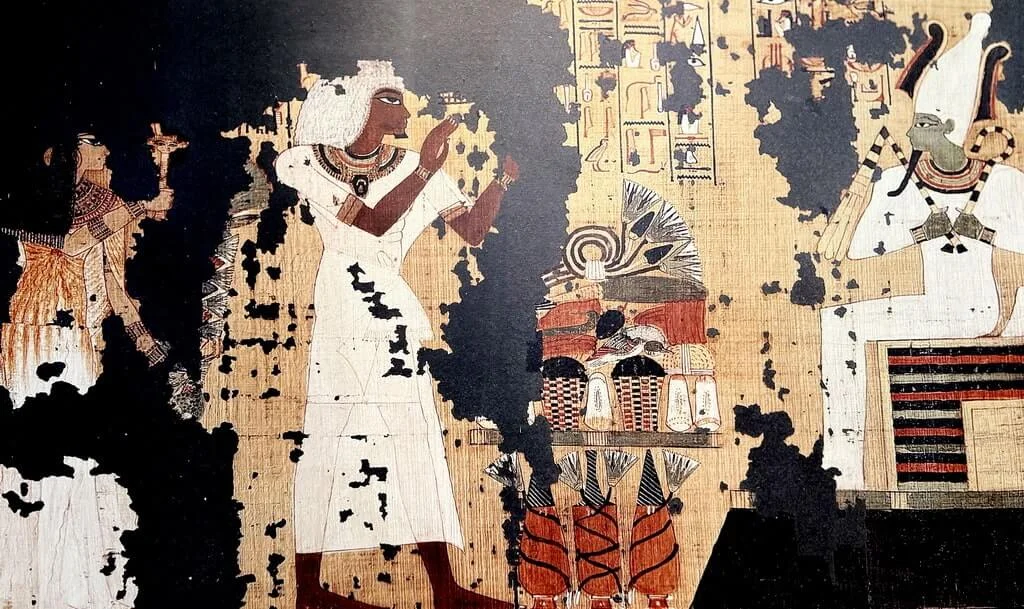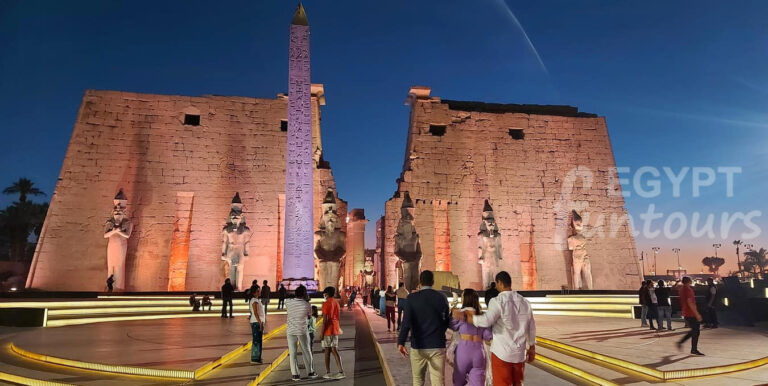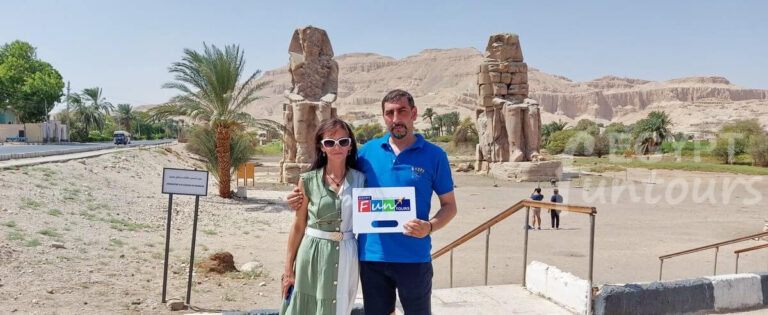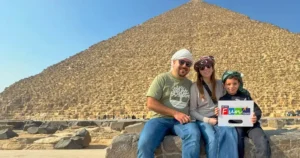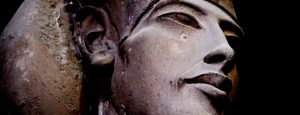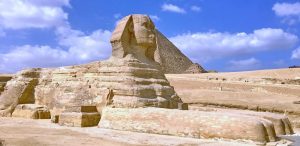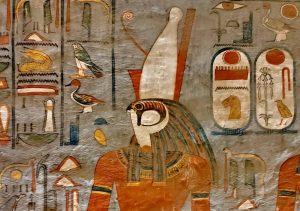The Discovery of the Tomb of Yuya and Thuya (KV 46)
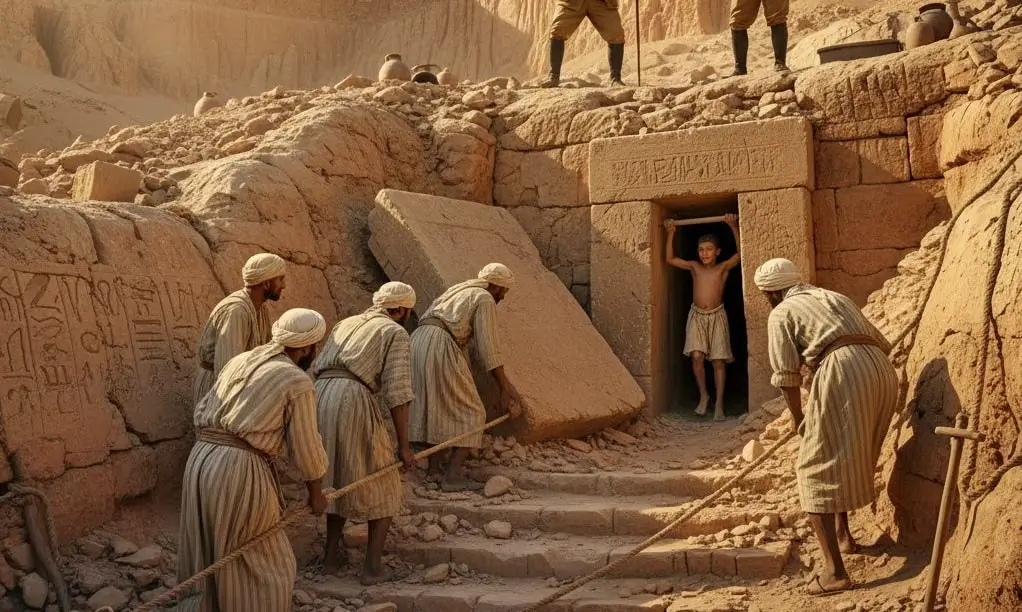
The discovery of the Tomb of Yuya and Thuya (KV 46) was almost accidental. It occurred in a seemingly unpromising area. The location was a narrow, rubble-filled space. It sat between the later tombs of KV 3 and KV 4.
The 1905 Excavation
Theodore Davis, an American millionaire, financed the dig. James E. Quibell, an experienced Egyptologist, led the team. They started work on January 25, 1905. On February 5, 1905, workmen uncovered the first step. They revealed a descending staircase cut into the bedrock. The tomb’s official number became KV 46.
The crew cleared debris near the entrance to KV 4. They discovered the fifteen-step staircase, which leads to a steeply descending corridor. The corridor measured approximately 1.76 meters wide and 2.05 meters high. The doorway itself, cut from solid rock, was massive. It measured 4.02 by 1.35 meters. It was blocked with stones and mud plaster.
Initial Entry and Archaeological Finds
Davis and Arthur Weigall, the Chief Inspector of Antiquities, first peered through a gap at the top of the door. This breach clearly signaled ancient entry. Despite the late hour, the foreman’s son was lifted into the darkness. He returned with the first recovered artifacts: a gilded stone scarab, a cane, and the yoke of a chariot. Thieves likely discarded these low-value items during their hasty exit. The official entry by the team, including Gaston Maspero, occurred the next day.
Tomb Architecture and Robbery Details
KV 46 is architecturally simple, designed in the private style rather than the elaborate royal plan. It consists of the fifteen-step staircase, the descending corridor, and a single, large, rectangular burial chamber. Notably, the tomb features no wall decorations or scenes. The only markings are the masons’ grid lines left on the walls, confirming the tomb was never finished with plaster or paint.
Experts believe looters entered the tomb at least three distinct times during antiquity.
- First Robbery: Occurred shortly after burial. Thieves mainly targeted perishable items like perfumed oils and wine, leaving behind rancid remains.
- Later Robberies: Occurred during the construction of the adjacent tombs KV 3 and KV 4. Thieves sought jewelry and easily removable gold from the mummies. They ripped the lids off promising-looking boxes.
Crucially, the heavy, nested coffins and most major furniture were left. The re-sealing efforts were early. Thuya’s body was covered with a shroud and the breached door partially re-stacked. The tomb, though disturbed, provided a massive, relatively complete assemblage.

